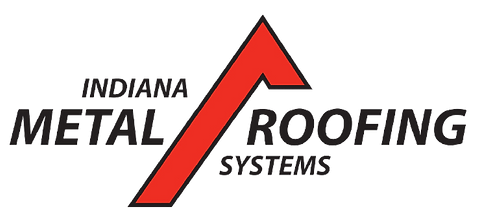At Indiana Metal Roofing Systems, we understand that a leaky roof is more than just an inconvenience; it can lead to significant damage to your home's structure and interior. If you’ve been battling frequent roof leaks, it might be time to consider a metal roof. Metal roofing offers durability, longevity, and a host of other benefits that make it a superior choice for homeowners looking to avoid the headaches of constant roof repairs.

Why Leaky Roofs Happen
Roofs can start leaking for a variety of reasons, including weather damage, wear and tear over time, or even poor initial installation. These leaks can begin as small drips but quickly escalate into major problems, causing water damage to your home’s interior, compromising its structural integrity, and leading to costly repairs.
Signs of a Leaky Roof
There are several signs that indicate your roof might be leaking, and it’s important to address them promptly to prevent further damage:
Water Stains: Brown or yellow stains on your ceiling or walls are often a sign of water intrusion from the roof.
Mold Growth: Mold in your home, particularly on ceilings or upper walls, can indicate persistent moisture from a roof leak.
Dripping Sounds: Hearing the sound of dripping during or after a rainstorm is a clear sign that water is entering your home.
Damaged Shingles: Missing, cracked, or warped shingles are often the culprit behind leaks and should be repaired or replaced immediately.
If you've noticed any of these signs, it's crucial to take action. A metal roof can provide a long-term solution to these problems, offering superior protection against leaks and weather damage.
The Benefits of Metal Roofing
Switching to a metal roof brings a range of benefits that go beyond simply solving the problem of leaks. Metal roofs are known for their durability, longevity, and energy efficiency, making them an excellent investment for homeowners.
Durability and Weather Resistance
Metal roofs are designed to withstand severe weather conditions, including heavy rain, snow, and high winds. They are also resistant to fire, which adds an extra layer of protection for your home. Unlike traditional roofing materials that may require frequent repairs, metal roofs can last up to 50 years or more with minimal maintenance.
Energy Efficiency
One of the standout features of metal roofing is its ability to reflect solar radiant heat, which can reduce cooling costs by up to 25%. This makes metal roofs not only environmentally friendly but also cost-effective in the long run.
Aesthetic Appeal and Variety
Metal roofs are available in a wide range of styles and colors, allowing you to choose a design that complements your home’s architecture.
Types of Metal Roofing
When considering a metal roof, it’s important to choose the right type of metal roofing that fits your needs and budget. Here are some of the most popular options:
Standing Seam Metal Roof: Known for its raised seams that prevent water from penetrating, this type of roof is both sleek and modern.
Metal Shingles: These mimic the look of traditional shingles but offer the durability and longevity of metal. They can be designed to resemble wood, tile, or slate.
Corrugated Metal Roof: An old-school choice that remains popular due to its cost-effectiveness and durability.
Stone-Coated Steel Roofing: Combines the strength of metal with the appearance of stone, providing both beauty and resilience.
Cost Considerations
While metal roofs have a higher upfront cost compared to traditional asphalt shingles, the long-term savings and benefits often make them a more economical choice. Metal roofs last 40 to 70 years, significantly outliving asphalt roofs, which typically need replacement after 15 to 20 years. Additionally, the energy savings from reduced cooling costs and the minimal maintenance required can offset the initial investment.
Preparing for Metal Roof Installation
Preparing your home for metal roof installation is a straightforward process, but it’s important to get it right. Here are some steps to ensure a smooth installation:
Clear the Area: Move vehicles, garden tools, and other items away from the house to avoid potential damage.
Trim Overhanging Branches: This prevents branches from scratching or damaging the new roof during installation.
Prepare the Interior: Remove any hanging frames or shelves that could fall during installation due to vibrations.
Letting your neighbors know about the upcoming installation can also help manage expectations regarding noise and the presence of a work crew.
Maintenance Tips for Your New Metal Roof
Once your metal roof is installed, maintaining it is simple. Regular inspections, especially after extreme weather events, can help identify and address any potential issues early on. Keeping gutters clear of debris is essential to prevent water pooling, which can lead to rust even on metal roofs. Additionally, touching up any scratches or chips in the paint will prevent rust and keep your roof looking its best.
Conclusion
Investing in a metal roof is a smart choice for homeowners dealing with leaks and looking for a long-lasting, energy-efficient roofing solution. While the initial cost may be higher than traditional options, the durability, low maintenance, and energy savings offered by metal roofs make them a wise investment. At Indiana Metal Roofing Systems, we provide high-quality metal roofing solutions that are designed to protect your home for decades. If you’re tired of dealing with roof leaks and want a more permanent solution, consider switching to a metal roof.
If you want to choose the best roofing for your Fort Wayne home, click here.

Comments